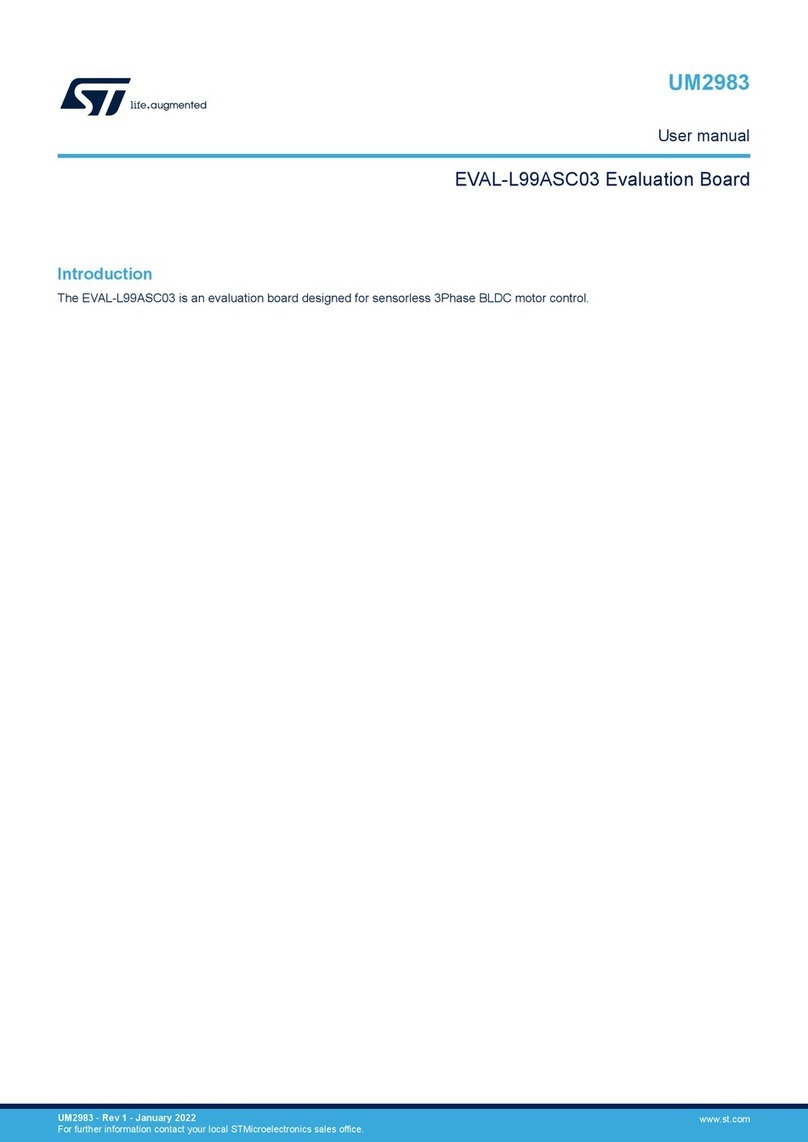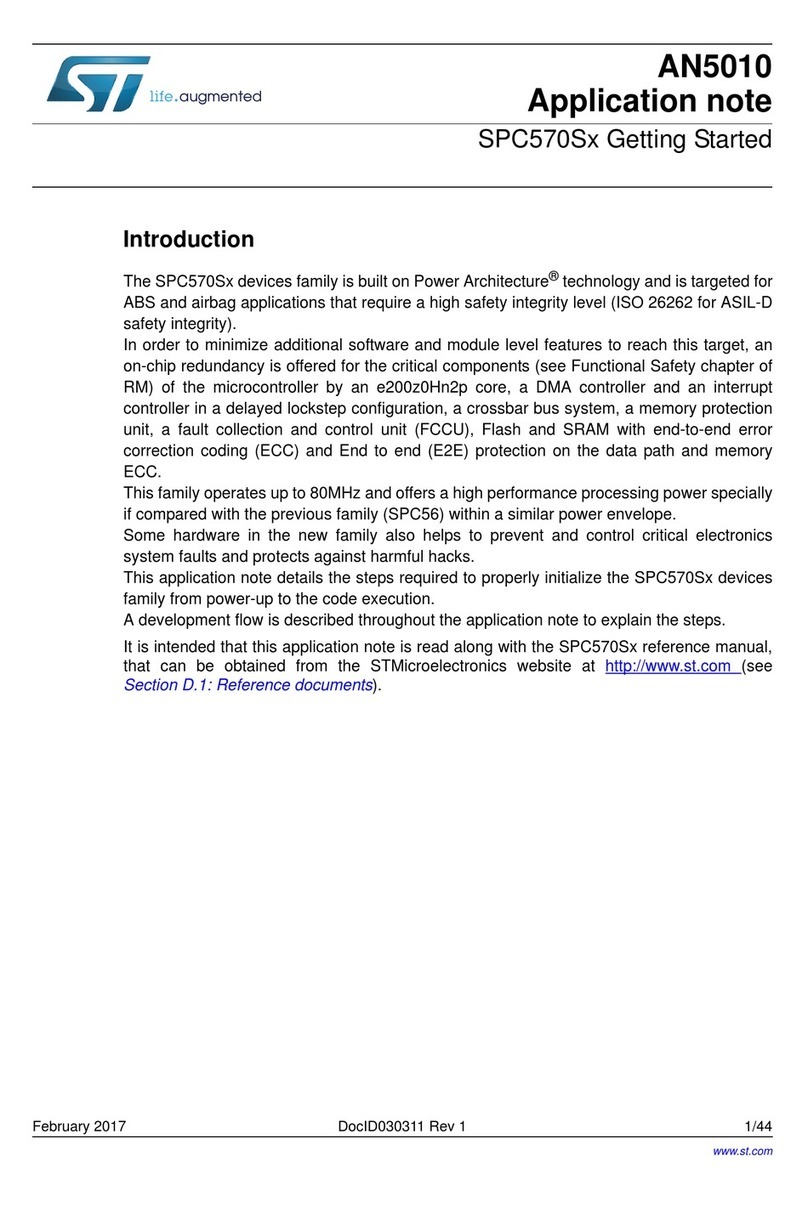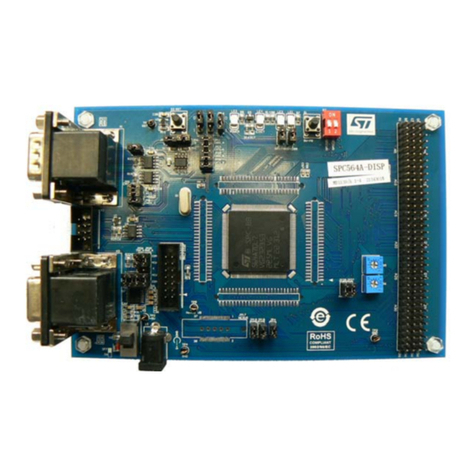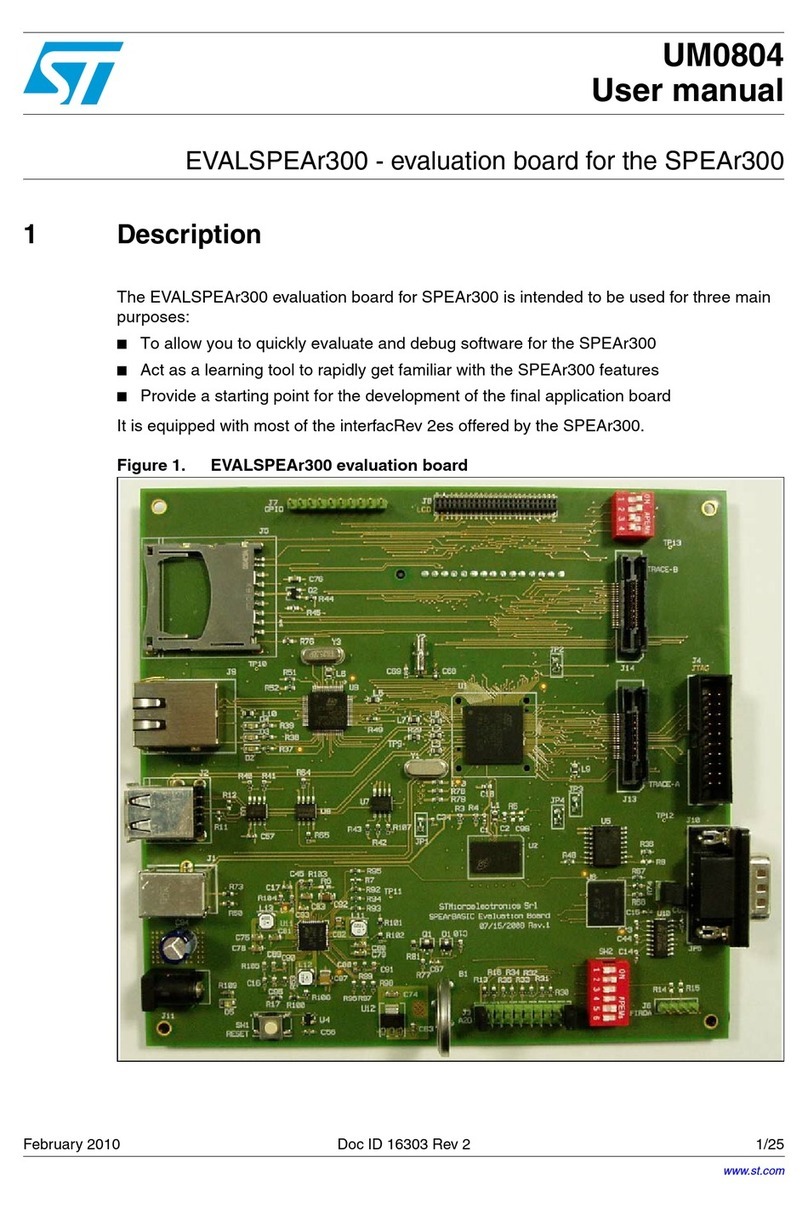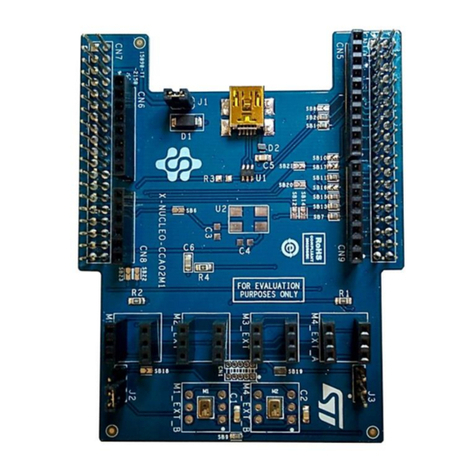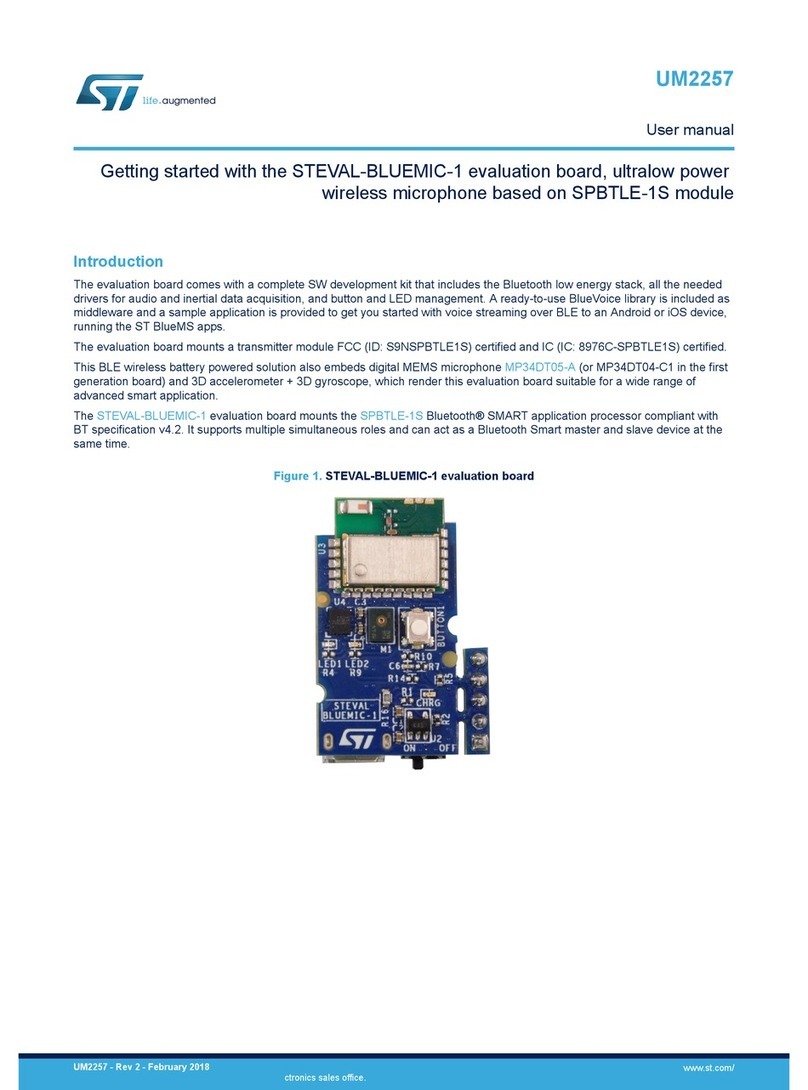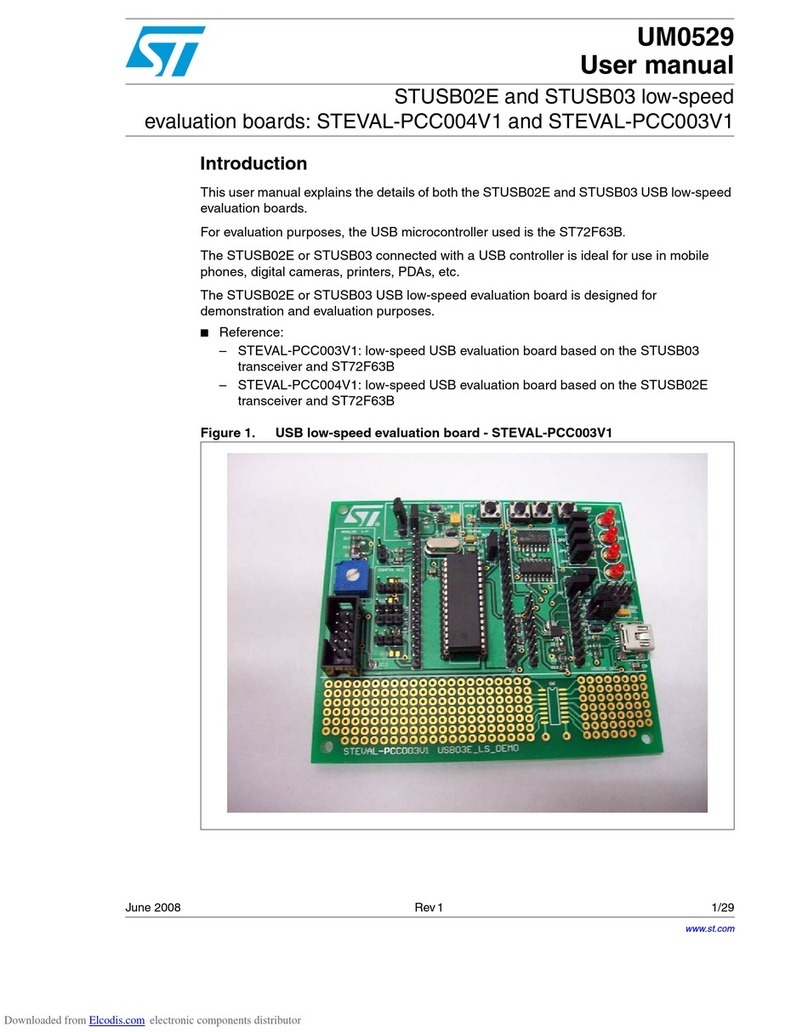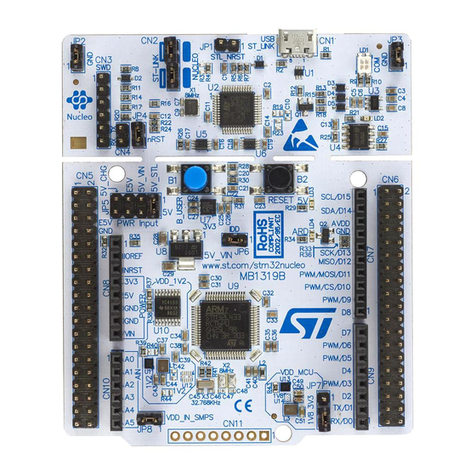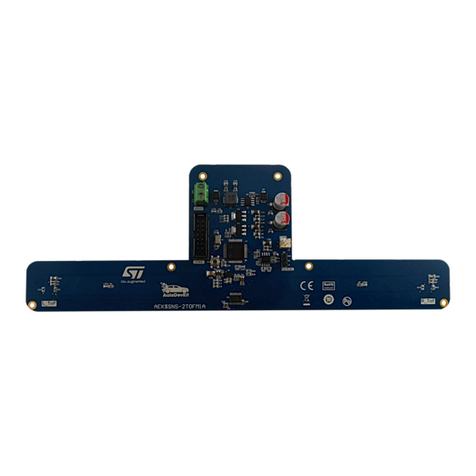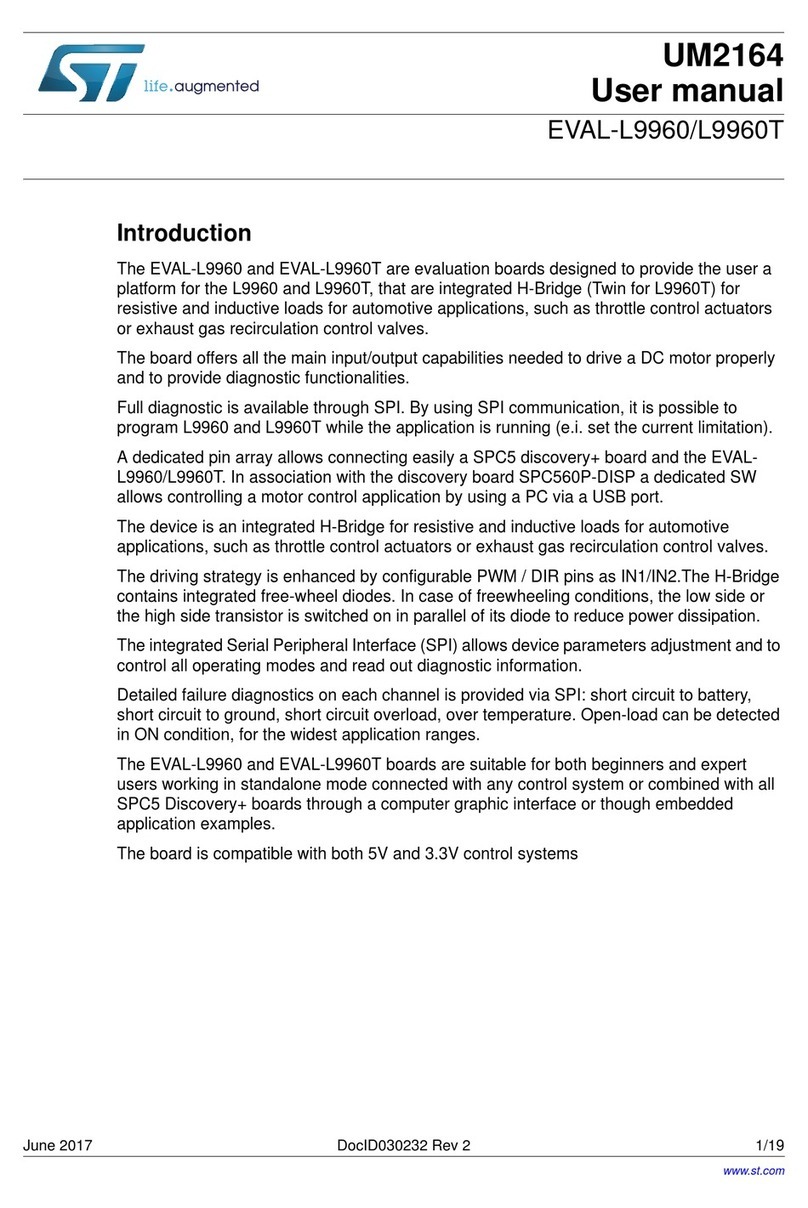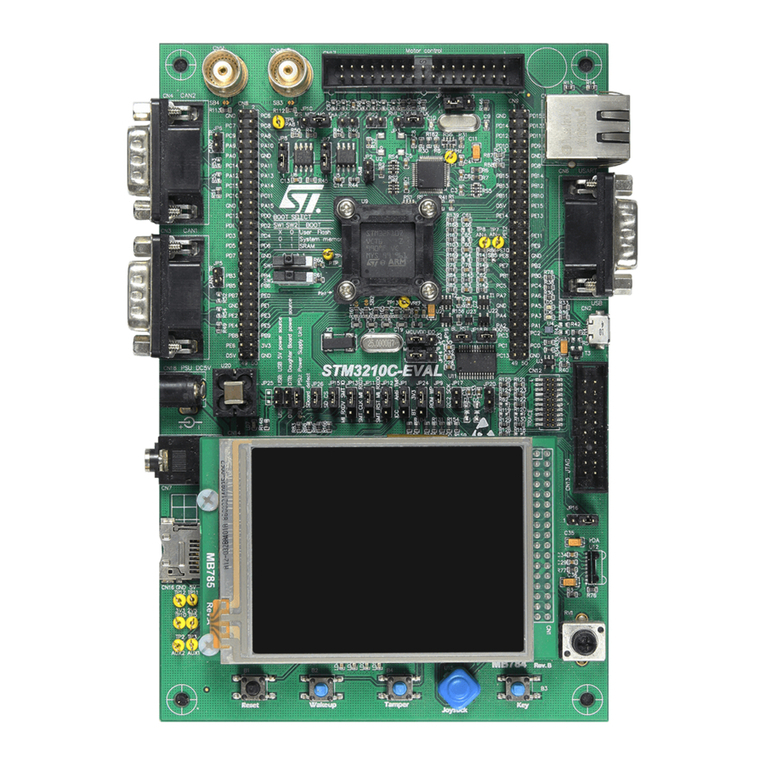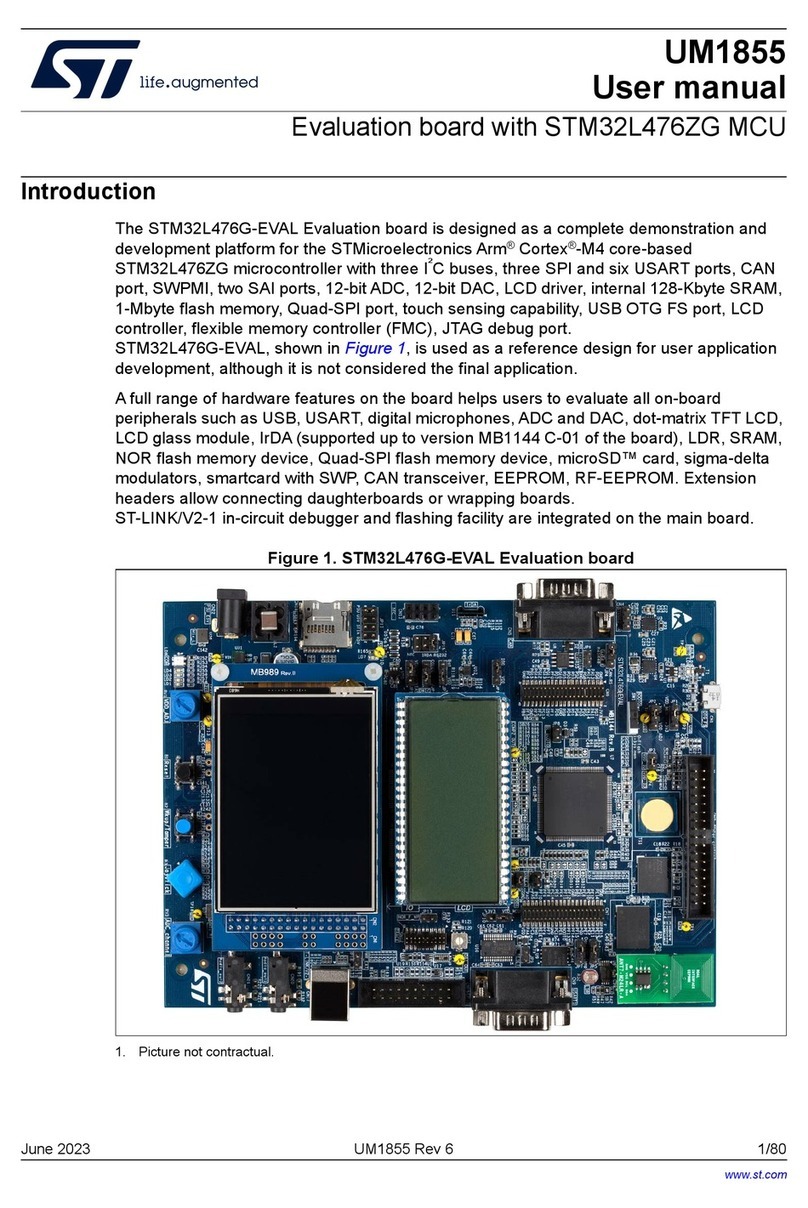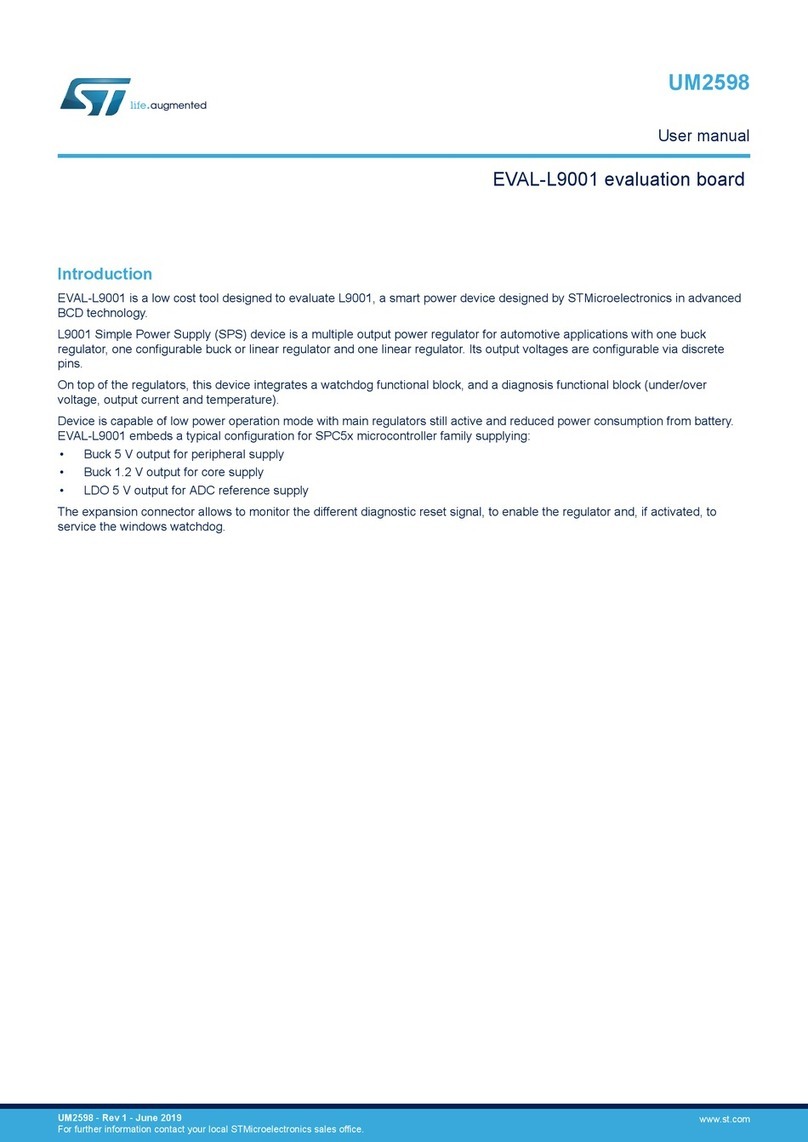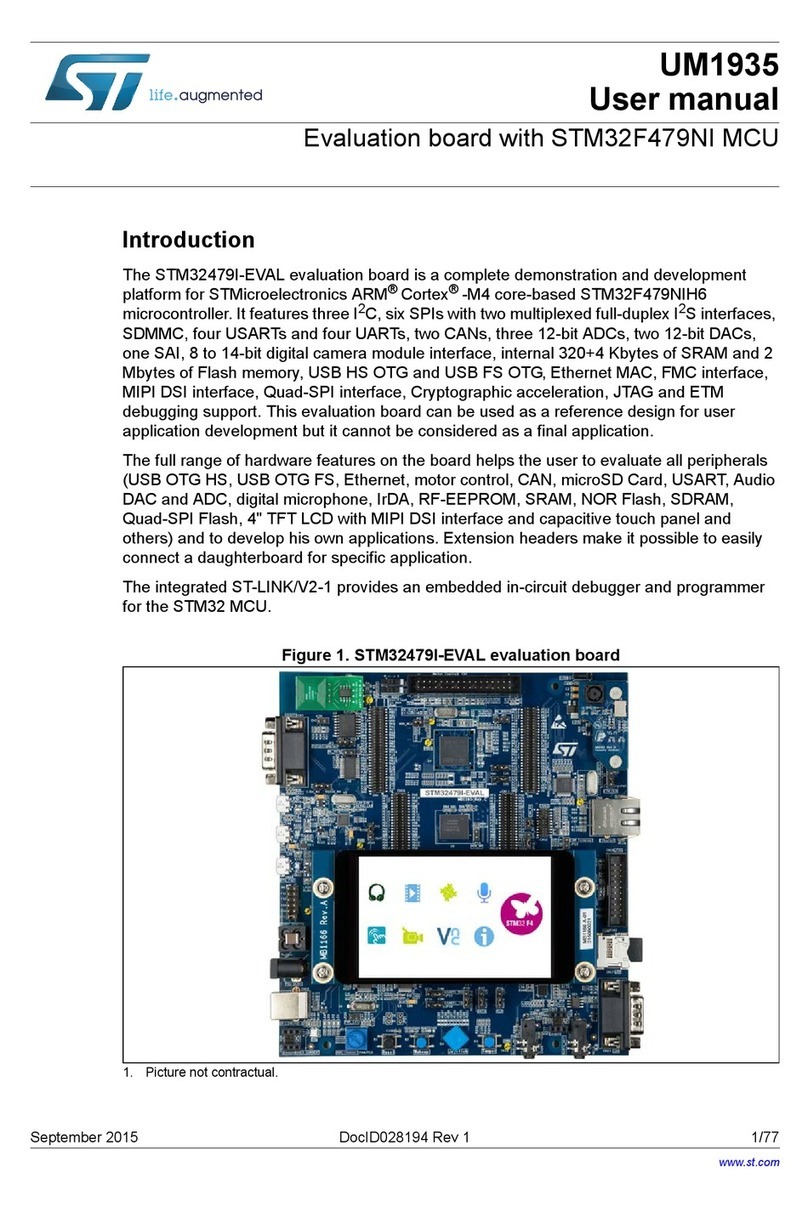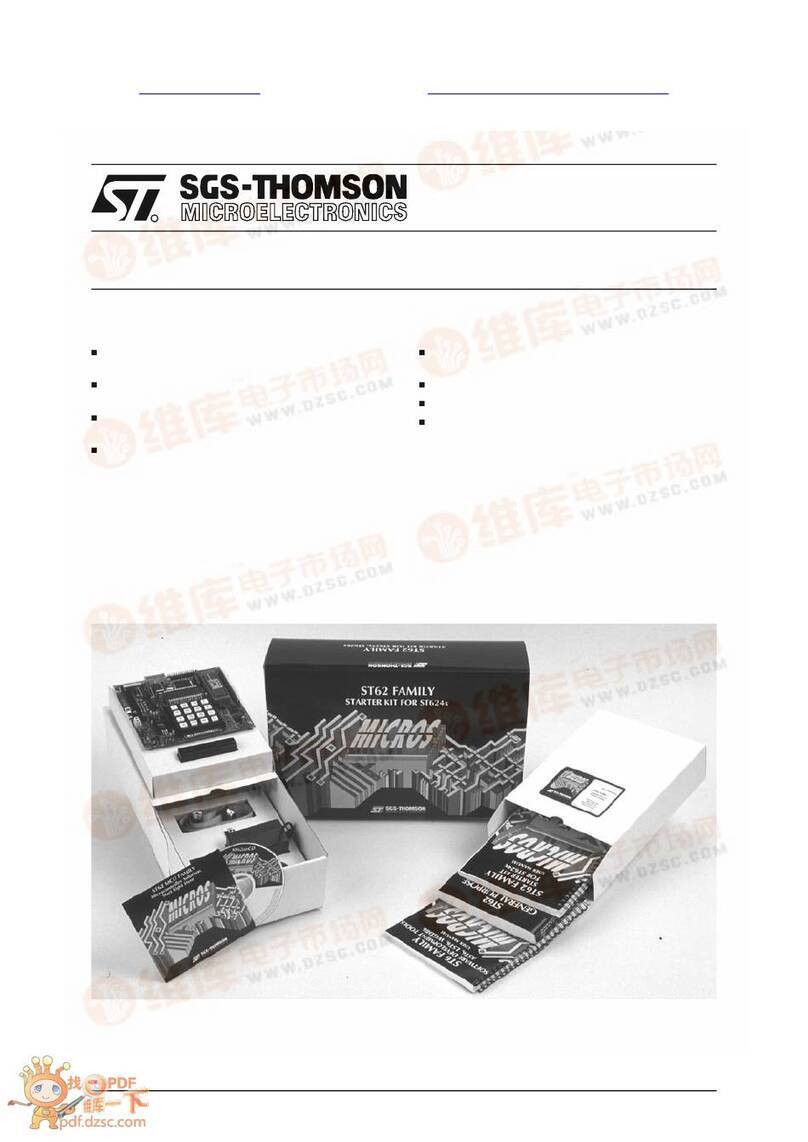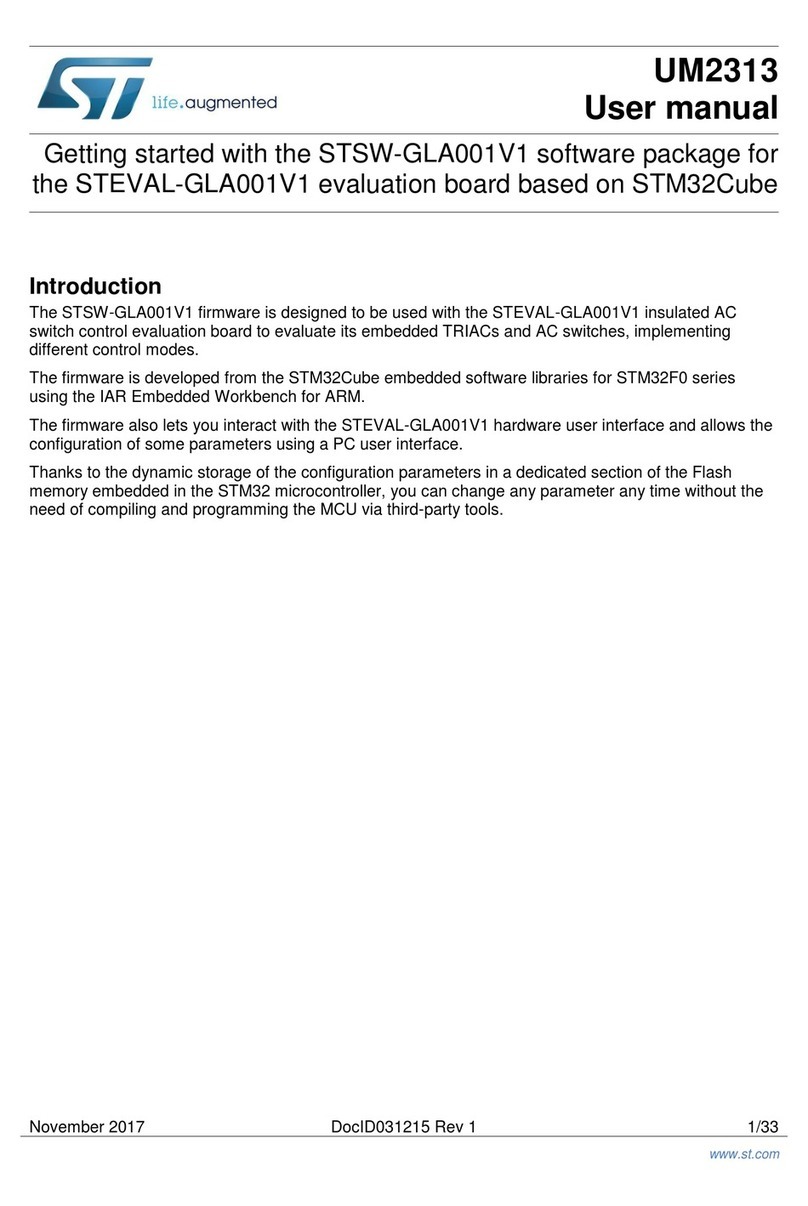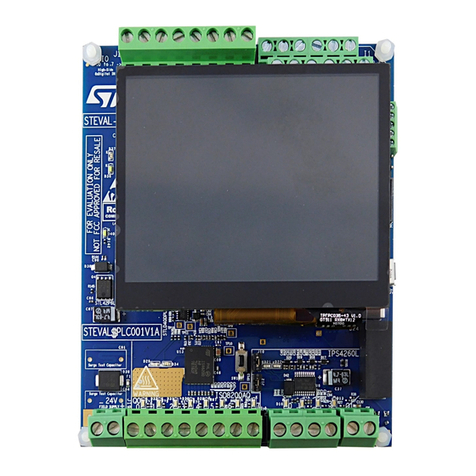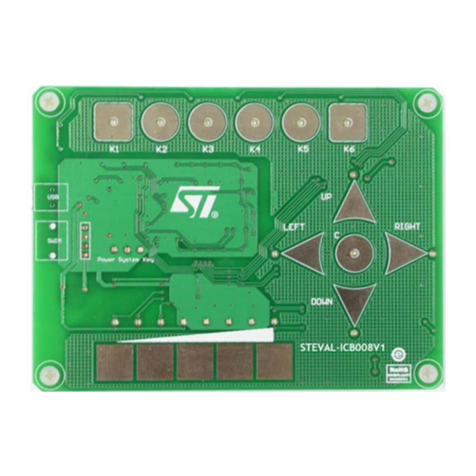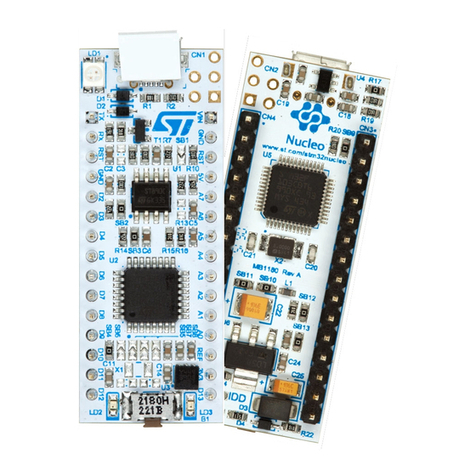
4.4 EVB features
The EVB system consists of a motherboard and a daughter card, both with distinct features.
The mother board provides the following key features:
• Support provided for different SPC58xx MCUs and SPC57xx MCUs by utilizing MCU daughter cards
• Single 12 V external power supply input with four on-board regulators providing all the necessary EVB and
MCU voltages; power supplied to the EVB via a 2.1 mm barrel style power jack or a 2-way level connector
• Master power switch and regulator status LEDs
• Two 240-way high-density daughter card expansion connectors allowing connection of the MCU daughter
card or a custom board for additional application specific circuitry
• All MCU signals readily accessible at a port-ordered group of 0.1” pitch headers
• RS232/SCI physical interface and standard DB9 female connector
• FlexRAY interface
• LINFlexD interface
• CAN FD interfaces (data rates up to 5 Mbit/s), one configurable to be connected to one out of two CAN
modules, and one connected to a dedicated third CAN module
• 10/100 Mbps ethernet interface
• Variable resistor, driving between 5 V and ground
• user switches and 4 user LEDs, freely connectable
• Liberal scattering of GND test points (surface mount loops) placed throughout the EVB
The daughter cards provide the following features:
• MCU (soldered or through a socket)
• Flexible MCU clocking options allow provision of an external clock via SMA connector or 40 MHz EVB
clock oscillator circuit. Jumpers on the daughter card allow selection between these external clocks. SMA
connector on MCU-CLKOUT signal for easy access.
• User reset switch with reset status LEDs
• Standard 14-pin JTAG debug connector and 34-pin Samtec Nexus3+ connector
• 10-pin Serial Interprocessor Interface (SIPI) connector
• Liberal scattering of ground and test points (surface mount loops) placed throughout the EVB
Note: To avoid confusion between jumpers and headers, all EVB jumpers are implemented as 2 mm pitch whereas
headers are 0.1 inch (2.54 mm). This prevents inadvertently fitting a jumper to a header.
4.5 Caution
Before the EVB is used or power is applied, please fully read the following sections on how to correctly configure
the board. Failure to correctly configure the board may cause irreparable component, MCU or EVB damage.
UM2740
EVB features
UM2740 - Rev 1 page 8/45

